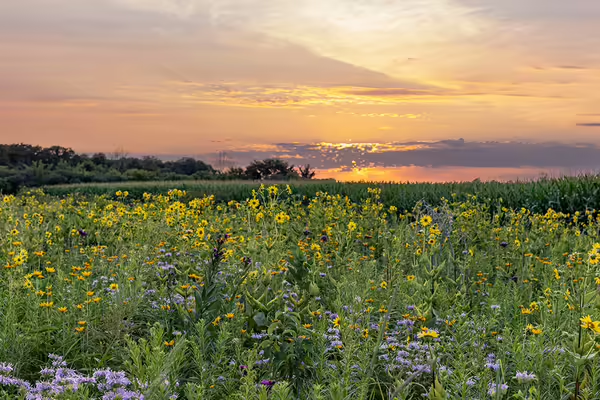
GALESBURG, Ill. — When it comes to farming, experience is often the best teacher. This June, producers can get answers to their questions about installing edge-of-field conservation practices by connecting with farmers who have first-hand knowledge at the Cultivating Conversations: How and Why Illinois Farmers Implement Edge-of-Field Practices panel discussion for west-central Illinois.
Four local producers will share their experiences and valuable lessons learned along the way before answering questions about their use of edge-of-field practices in this free event. Those who attend will be able to network with other farmers, learn how practices work, explore cost-share opportunities, and discover local professionals installing practices such as buffer strips, constructed wetlands, and bioreactors that are designed to capture nutrient and sediment and keep them out of nearby bodies of water.
“We want to share real-life experiences of farmers who have used edge-of-field practices and not shy away from the considerations and complications that come up,” said Rachel Curry, University of Illinois Extension agriculture and agribusiness educator. “Farmers listen to other farmers when it comes to stewarding their land.”
The conversation will also include a discussion about the Illinois Nutrient Loss Strategy led by Curry and strategies that producers can use when talking about conservation practices with others led by water quality expert Catherine DeLong from Iowa State University.
The program is from 9 a.m. to 2:30 p.m. on June 25 at the Knox County Farm Bureau, 180 S. Soangetaha Road in Galesburg. Sign up at go.illinois.edu/EdgeOfField or call (309) 342-5108. A light breakfast and lunch will be provided.
This program is presented in collaboration with the Illinois Sustainable Ag Partnership, Midwest Dairy, Illinois Soybean Association, and the Soil and Water Conservation Society.
Across Illinois, farmers are working together to reduce the loss of the nutrients nitrogen and phosphorus from fields, which can pollute local waterways, contaminate drinking water supplies, lower property values, hinder recreational opportunities, and harm local businesses and tourism. Local water quality also has an impact downstream from the Mississippi River to the Gulf of Mexico, where a hypoxic zone the size of Yellowstone National Park threatens the fishing industry. Explore more about preventing nutrient loss in Illinois with Illinois Extension and the Illinois Nutrient Loss Reduction Strategy.
Illinois Extension leads public outreach for University of Illinois by translating research into action plans that allow Illinois families, businesses, and community leaders to solve problems, make informed decisions, and adapt to changes and opportunities. Illinois Extension is part of the University of Illinois Urbana-Champaign College of Agricultural, Consumer and Environmental Sciences.